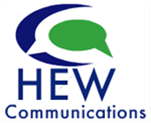The big marketing news this week was JP Morgan Chase’s spectacularly stupid foray into transparency and interaction on Twitter. They called it a “bad idea,” thereby employing perhaps the most dramatic understatement in the history of Twitter.
The “bad idea” assessment also illustrates how little they understand or have learned. Because as bad ideas coming out of the JPMC marketing department go, this one doesn’t even rate.
Why? Because they operate on two faulty assumptions:
First, they failed to realize that media—both traditional and less-so—use Twitter. A lot.
Second, they assumed that us 99%ers aren’t real people—we are, after all, but figures on a spreadsheet, and therefore couldn’t possible formulate in 140 characters any kind of commentary that would damage them.
Lesson learned? I seriously doubt it. But all is not lost…we can learn something from their folly.
Meanwhile, over in England, a bunch of big companies got together spontaneously on Twitter and did it exactly right. You can see that conversation here.
The differences? Well, let’s see…
1. The “Tesco et al” conversation wasn’t planned. It was spontaneous. Hell, it is still going on as I type this.
2. Which means that whomever handles the Twitter accounts for the (many!) companies involved is smart and on the ball. And doesn’t run away from his or her desk at 5 pm, Friday or not.
3. It didn’t force any artifice on those following along (read: no stupid hashtag), but rather invited participation by just…happening.
So what does all this mean for authors and publishers? I’ll be brief: If you’re not talking to people, paying attention to what the Twitterverse is saying in real time, and maintaining a sense of humor, then, well…


